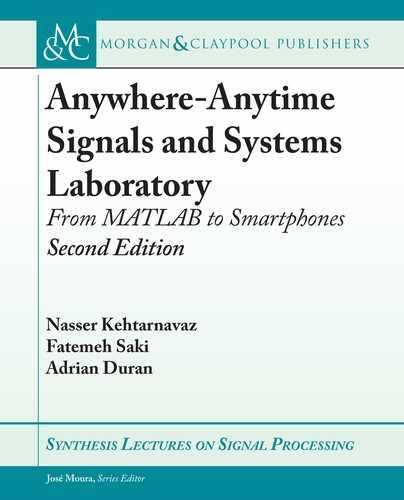
128 5. FOURIER SERIES
e relationships between the trigonometric series and the exponential series coefficients
are given by
a
0
D c
0
; (5.9)
a
n
D 2Refc
n
g; (5.10)
b
n
D 2Imfc
n
g; (5.11)
c
n
D
1
2
.
a
n
j b
n
/
; (5.12)
where Re and Im denote the real and imaginary parts, respectively.
According to the Parseval’s theorem, the average power in the signal x.t / is related to its
Fourier series coefficients c
n
’s, as indicated below:
1
T
Z
T
jx.t/j
2
dt D
1
X
nD1
jc
n
j
2
: (5.13)
More theoretical details of Fourier series are available in signals and systems textbooks,
e.g., [1–3].
5.1 FOURIER SERIES NUMERICAL COMPUTATION
e implementation of the integration in Equations (5.6)–(5.8) is achieved by performing sum-
mations. In other words, the integrals in (5.6)–(5.8) are approximated by summations of rect-
angular strips, each of width t, as follows:
a
0
D
1
M
M
X
mD1
x.mt /; (5.14)
a
n
D
2
M
M
X
mD1
x.mt / cos
2 mn
M
; (5.15)
b
n
D
2
M
M
X
mD1
x.mt / sin
2 mn
M
; (5.16)
where x.mt / are M equally spaced data points representing x.t/ over a single period T , and
t indicates the interval between data points such that t D
T
M
.
Similarly, by approximating the integral in Equation (5.2) with a summation of rectangu-
lar strips, each of width t, one can write
c
n
D
1
M
M
X
mD1
x.mt / exp
j 2 mn
M
: (5.17)
Note that throughout the book, the notations dt, delt a, and are used interchangeably to denote the
time interval between samples.
..................Content has been hidden....................
You can't read the all page of ebook, please click here login for view all page.
